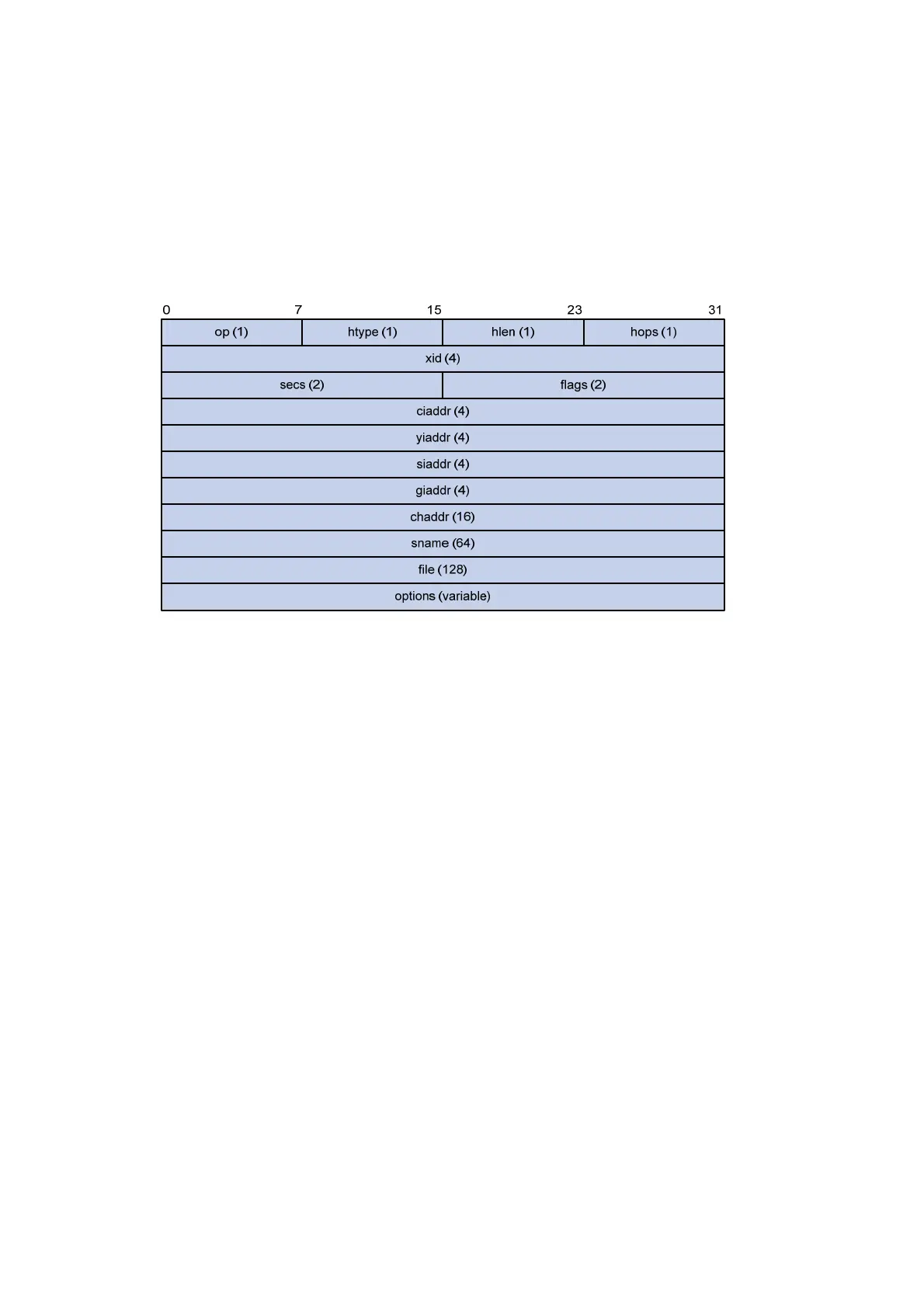36
If the client receives no reply, it broadcasts another DHCP-REQUEST message for lease extension
when about seven-eighths of the lease duration elapses. Again, depending on the availability of the
IP address, the DHCP server returns either a DHCP-ACK unicast or a DHCP-NAK unicast.
DHCP message format
Figure 17 shows the DHCP message format. DHCP uses some of the fields in significantly different
ways. The numbers in parentheses indicate the size of each field in bytes.
Figure 17 DHCP message format
• op—Message type defined in options field. 1 = REQUEST, 2 = REPLY
• htype, hlen—Hardware address type and length of the DHCP client.
• hops—Number of relay agents a request message traveled.
• xid—Transaction ID, a random number chosen by the client to identify an IP address allocation.
• secs—Filled in by the client, the number of seconds elapsed since the client began address
acquisition or renewal process. This field is reserved and set to 0.
• flags—The leftmost bit is defined as the BROADCAST (B) flag. If this flag is set to 0, the DHCP
server sent a reply back by unicast. If this flag is set to 1, the DHCP server sent a reply back by
broadcast. The remaining bits of the flags field are reserved for future use.
• ciaddr—Client IP address if the client has an IP address that is valid and usable. Otherwise, set
to zero. (The client does not use this field to request an IP address to lease.)
• yiaddr—Your IP address. It is an IP address assigned by the DHCP server to the DHCP client.
• siaddr—Server IP address, from which the client obtained configuration parameters.
• giaddr—Gateway IP address. It is the IP address of the first relay agent to which a request
message travels.
• chaddr—Client hardware address.
• sname—Server host name, from which the client obtained configuration parameters.
• file—Boot file (also called system software image) name and path information, defined by the
server to the client.
• options—Optional parameters field that is variable in length. Optional parameters include the
message type, lease duration, subnet mask, domain name server IP address, and WINS IP
address.
